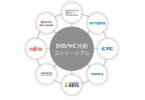Today SAP announced the launch of their blockchain cloud platform. Initially, the platform supports Hyperledger Fabric and MultiChain, with plans to support more.
The company plans to be technology-agnostic. Perhaps they selected these two technologies because of existing integrations. For example, Deutsche Bahn, which uses Hyperledger Fabric, told Ledger Insights that they’d integrated Fabric with SAP.
Last week Commerzbank announced they’d integrated R3’s Corda with SAP, but Corda is not yet supported in the SAP Cloud Platform.
SAP surveyed their Blockchain community and found 84 percent of members have started exploring blockchain and 3 percent have live projects. In the same study, 63% of users identified supply chain and IOT as the most promising use case. The second most popular, legal and regulatory, garnered only 19% of the votes.
With SAP’s new offering, customers can extend their existing solutions by adding blockchain capabilities. Or they can initiate a new blockchain network.
SAP Co-Innovation
The Enterprise software company announced that it’s working with 65 clients on blockchain use cases. They’re inviting others to participate in the pilots. These initiatives include:
- Transportation Management: for all transport modes; sellers, buyers, banks and authorities share and sign documents electronically
- Global track and trace
- Advanced track and trace for pharmaceuticals
- Farm to consumer traceability
- Payment fraud prevention: a shared source of data for buyers and suppliers.
Consortium announcement
In addition to the co-innovation program status, SAP announced a new Blockchain consortium. Apart from SAP, the initial members are Airbus, Amkor, Flex, Hewlett Packard Enterprise, Intel, and UPS.
One of the most significant tasks for the alliance is to develop new standards.
No radical changes?
In today’s announcement, one of the comments by SAP was: “there are no radical changes for an organization’s IT infrastructure in sight.”
Not everyone shares that view. A good example is RiskBlock, the insurance alliance. At first, they assumed their insurer members would not want to store policy data on the blockchain – just hashes of the data. So insurers would retain their back-office systems and just keep a shared hash on the blockchain.
However, after a few months, it became clear that US insurers are quite keen to replace their policy management systems with a shared blockchain infrastructure.
Why? Because in the US they don’t store old policies internally, they use an external service. And retrieving old data can cost them up to $30m a year. So the motivation is money saving.
Many of SAP’s clients are involved in supply chains as customers or suppliers. The signs are that industry could be more fragmented. So it remains to be seen how quick and how radical the changes might be.







